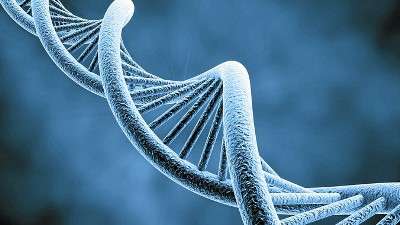"Kissing genes" breakthrough

In a ground-breaking discovery that will have a major impact on our understanding of the function of DNA, our genetic blueprint, a group of scientists from Wits and the Council for Scientific and Industrial Research (CSIR) are the first to show that when genes interact in three dimensions, or engage in "gene kissing", this has a major impact on how genes are switched on inside the cell.
It is a landmark finding which appears in the journal Cell, one of the world's most prestigious research publications. The research was published on 24 October 2013.
This is only the fifth South African-affiliated article that has ever been published in Cell, and one of just two articles in three decades to feature an all-South African-based cast.
A long-standing question in biology is whether "gene kissing" is a cause – or simply a consequence – of gene activation. This question was finally answered by a team consisting of Professor Marco Weinberg, Associate Professor in the Antiviral Gene Therapy Research Unit in the Wits Department of Molecular Medicine and Haematology, Wits graduates Dr Stephanie Fannucchi, Dr Youtaro Shibayama and Shaun Burd and Dr. Musa M. Mhlanga, Research Group Leader of the Gene Expression and Biophysics Group at the CSIR.
The team performed ground-breaking experiments to show that "gene kissing" can switch genes on. The discovery sheds light on how genes change from inactive to active states, and how different genes can co-ordinate their activity simultaneously.
Within each of our cells lies an incredible 1.2 metres of tightly coiled DNA shrunk to a size 1/50th that of a grain of sand. These genes encode our physical traits, such as eye colour or blood type. However, DNA also codes for genes that function constantly to keep us alive. These need to be switched "on" and "off" by the cell as needed. How gene activity is regulated has been the subject of intense study for many years, and scientists suspected for some time that the physical contact between genes, or "gene kissing" could play a role.
"DNA is coiled and tangled like spaghetti inside the cell," explains Weinberg. "So there are many places where the DNA touches and intersects. These interactions could be crucial to how the information in the DNA is read and interpreted by the cell, but this had never been shown before."
The state-of-the-art microscopes, which were custom built in South Africa by the group, were an important tool in being able to achieve single molecule resolution in imaging this gene activity by peering deep into the nucleus of cells. These tools enabled them to see the activity of a single gene. Then using DNA-cutting enzymes, or "molecular scissors", they were able to cut DNA at precise locations to prevent genes from making contact. "Being able to alter the genetic code in this manner is the "holy grail" of molecular biology, but has only recently been made possible. In this way, some genes were shown to "kiss" in order to be switched "on" and surprisingly in this instance, one gene acts as a master gene to orchestrate the activity of other genes," says Fannucchi.
Co-author and Claude Leon postdoctoral fellow Shibayama remarks: "We jumped on the technology of producing efficient "molecular scissors" as soon as it became available last year, and our integrated expertise in microscopy and molecular biology, combined with creative thinking, gave us a unique advantage over our competitors in conducting this study."
The group is focusing some of its efforts on what this work could mean for human health. In late 2011, the lab was the first in Africa to generate induced pluripotent stem cells, a type of stem cell which could hold the key to growing new tissue to replace that which is diseased – and can even be used to create disease models "in a dish." Combined with the knowledge to alter the genetic code and control gene activity, exciting novel experiments and therapeutic avenues can be envisaged for the future. Scientists will gain a deeper understanding of cancer, chronic diseases such as diabetes, allergy responses and a host of other diseases and important cellular processes. This important research gives scientists across the globe new knowledge and tools about how genes behave and how to direct them, paving the way for future discoveries.
Mhlanga is passionate about what this discovery means, globally and to South Africa: "This work germinated from a desire to answer a fundamental long-standing question in gene regulation. Our goal is that scientists in Africa should not simply be consumers of fundamental scientific discoveries, rather they should be active contributors and producers to this body of basic knowledge. We would like to train the next generation of scientists in Africa to become excellent scientists who routinely produce ground-breaking work. In this endeavour we are very grateful for the continued support we receive from the Department of Science and Technology Emerging Research Area program for several aspects of this work over the last few years."
More information: Study PDF: www.wits.ac.za/files/r1cjt_088301001384249639.pdf
Journal information: Cell
Provided by University of the Witerwatersrand
















